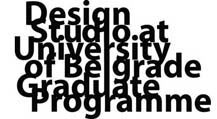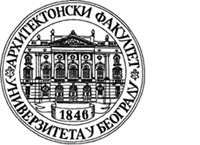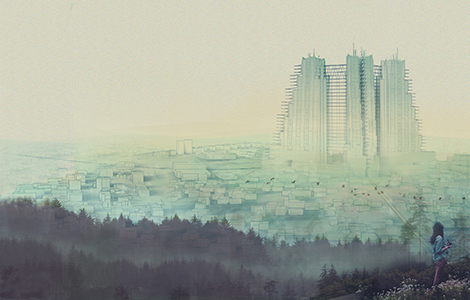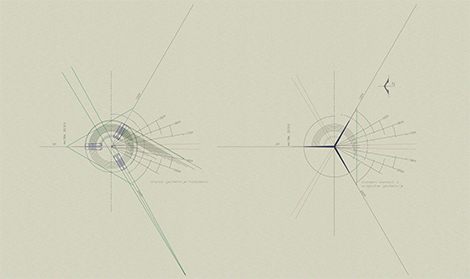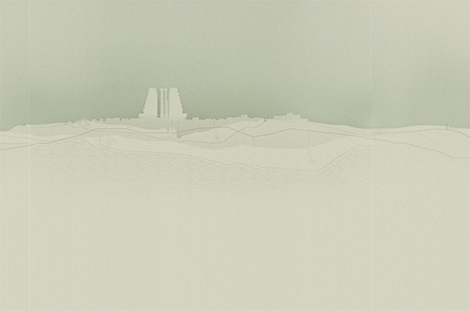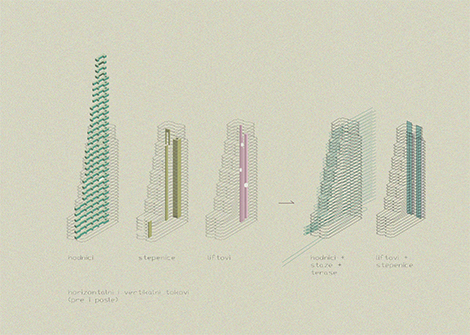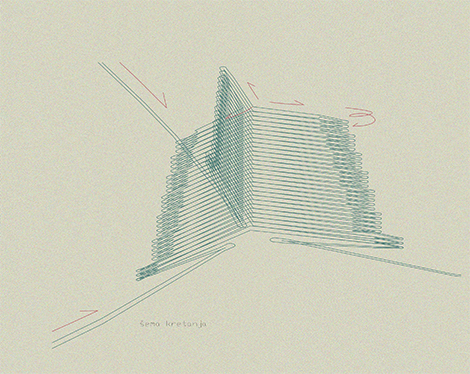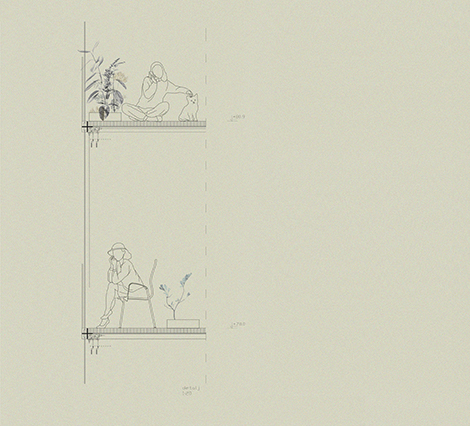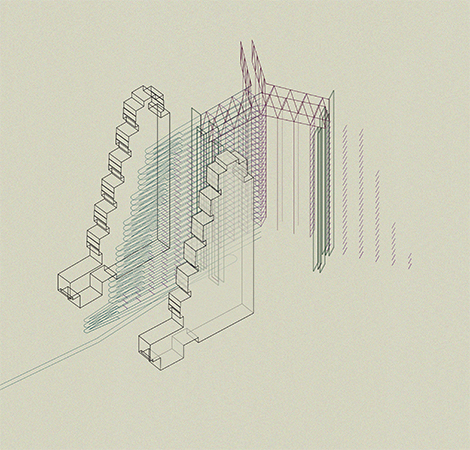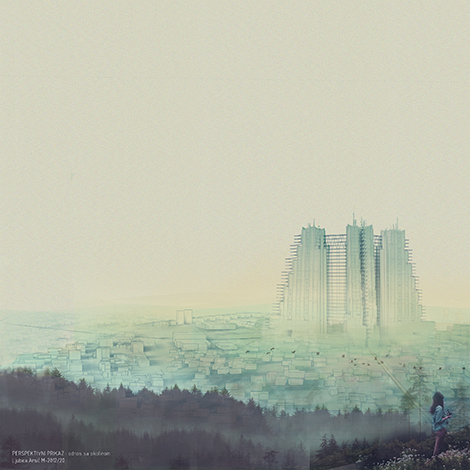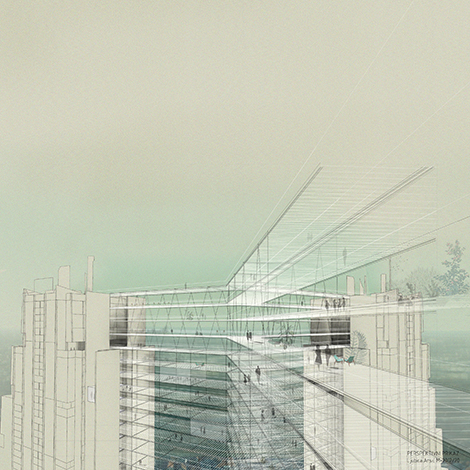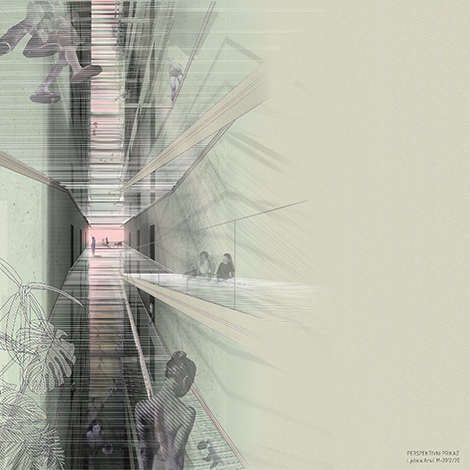Mirror 120°
| An homage to architect Vera Ćirković |
The East Gate of Belgrade is a very specific piece of architecture built between 1973 and 1976 and it is dominant in the silhouette of Belgrade. Transformation of such object includes rethinking of its role in the past, as well as in its possible future, on a level of a tower, district and the city.
The Idea was to transform Rudo complex by adding an infrastructural park which would connect all three towers and form a new public space between them. This way, the newly established connection between residents is both, physical and visual. This would directly encourage social interaction, improve the public spaces and offer more successful connection between the outer space and apartments. The towers themselves remain essentially unchanged, except for the spaces of corridors, which are being replaced with a new light and transparent structure. Vertical circulations are dislodged towards the center of the three towers. The newly formed ramps and walkways extend continuously through the complex and solve the problem of “dead-end streets”.
The aim of the project is to reach the maximum transformation with the minimal intervention. This approach excludes demolition and involves a detailed analysis of the original project. It emerges as one of the possible ways of treating modernist architectural heritage. For that reason, this project represents a certain kind of homage to little known architect Vera Ćirkovic.
Istočna kapija Beograda (1973-1976.god) zauzima važno mesto u silueti grada Beograda. Transformacija jednog takvog objekta podrazumeva ponovno promišljanje njеgove uloge u prošlosti, kao i zamišljanje moguće budućnosti na nivou kula, naselja i grada.
Ideja je da se Rudo kompleks transformiše dodavanjem infrastrukturnog parka, koji bi povezao sve tri kule i formirao novi javni prostor između njih. Na taj način uspostavlja se povezivanje na fizičkom i vizuelnom novou između stanara, što će podstaći društvenu interakciju, unaprediti javni prostor i ponuditi uspešniju vezu između spoljnih prostora i stanova. Same kule ostaju suštinski nepromenjene, osim prostora hodnika, koje zamenjuje nova prozirna struktura. Vertikalni komunikacioni tokovi se izmeštaju ka centru triju kula. Novoformirane rampe i staze pružaju se kontinualno i rešavaju problem “slepih ulica” u kompleksu.
Cilj projekta je da se minimalnom intervencijom postigne maksimalna transformacija. Ovakav pristup isključuje rušenje i podrazumeva podrobnu analizu originalnog projekta, pa se nameće kao jedan od mogućih načina tretiranja modernističkog arhitektonskog nasleđa. Ovaj projekat zato predstavlja svojevrsnu vrstu omaža malo poznatoj arhitektici Veri Ćirković.
